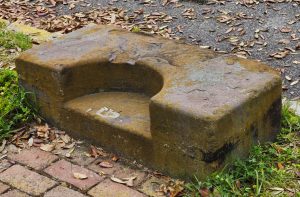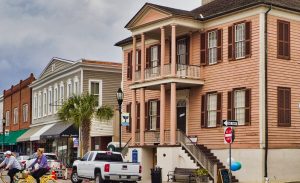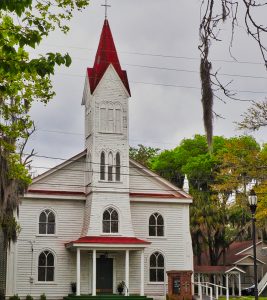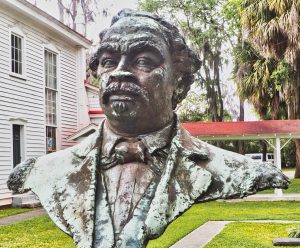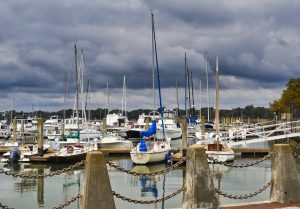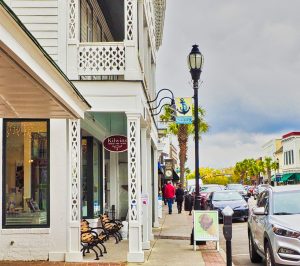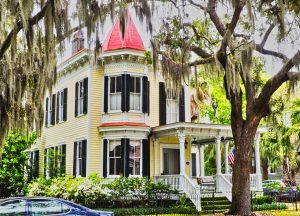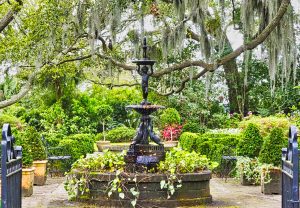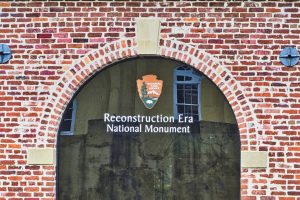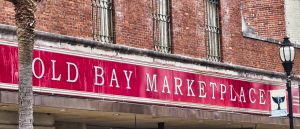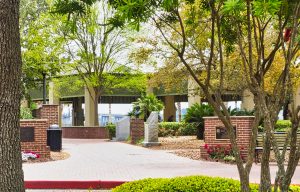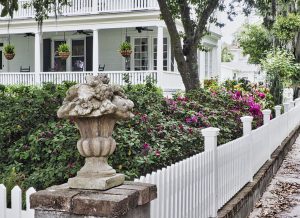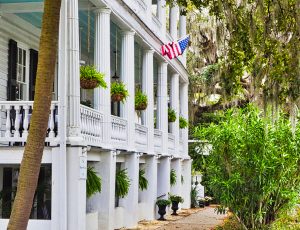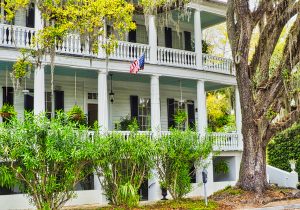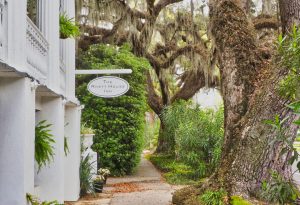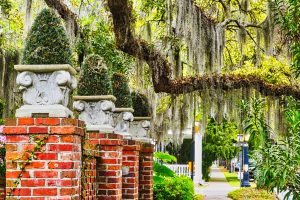As seniors, we have won the right to stroll. To stroll for hours. To stroll slowly. Strolling through the heart of the low country means walking Beaufort, South Carolina and there couldn’t be a nicer place for it. I took my time walking the historic district “out” to The Point and had strolled my way around old Beaufort in one afternoon!
Using Beaufort as my headquarters, I explored a few of the 200 islands in Beaufort County, SC. By doing so, the diversity of the county struck me as unique in all of America.
HISTORY
Beaufort County was the site of the second landing on the North American continent by Europeans in 1514! The first landing was only a year earlier in St. Augustine, Florida.*
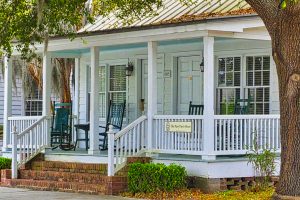
COLONIAL PERIOD (1711-1783)
Beaufort was founded by the British in 1711.The town was attacked and burned by the Yemassee tribe in 1715. After the Yemassee were driven into Florida, they continued to attack the coastal islands until 1728.
Just prior to the American Revolution, the town grew to more than 4,000 people, By 1776, Beaufort was a hub for shipbuilding. Beaufort, SC is the second oldest city in the state of South Carolina. In the late 1700s, Beaufort and the bordering islands were a center of the indigo, cotton and rice industries.
African slaves were brought to the colony in large numbers to provide labor for the plantations, and by 1720 were the majority of the population in Beaufort County.
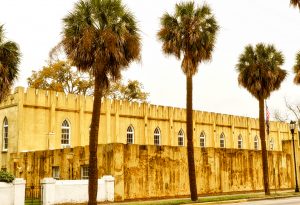
The British captured Savannah and Charleston during the Revolution. The American Revolution split neighbors in Beaufort apart. Several families supported the Tories while others favored independence. The War ruined the District of Beaufort. Sea Island Cotton (the finest and most expensive cotton grown in America) came to the rescue and altered industry and the economy in the area. Between 1790 and 1860, Beaufort was described by one historian as, “the wealthiest, most aristocratic and cultivated town of its size in America.”**
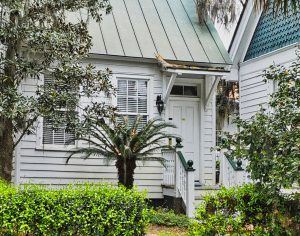
South Carolina lost more soldiers and gave more money to the American Revolution than any other colony.***
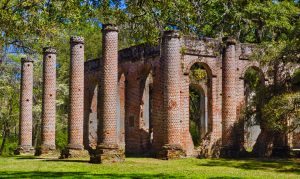
ANTEBELLUM PERIOD (1783-1861)
During this period, Beaufort was one of the wealthiest cities in the country. The wealthy low country planters in town and on the surrounding islands began arguing in favor of secession. The Declaration of the Immediate Causes Which Induce and Justify the Secession Design of South Carolina from the Federal Union was a proclamation issued on December 24, 1860. Edmund Rhett drafted the Articles of Secession in the Beaufort House (now a Bed & Breakfast). He had supported secession as early as 1844.
South Carolina was the first state to secede from the Union.
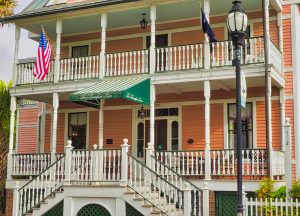
Beaufort was one of the first cities that Union forces captured during the Civil War in 1861. The Union occupation of the city saved Beaufort from a lot of damage during the War. The Union established their headquarters in the John Mark Verdier House. Verdier was a plantation owner and wealthy merchant.
|
|
|
|
|
|
HARRIET TUBMAN’S HISTORY IN THE AREA
Harriet Tubman, an escaped slave (she ran away in 1849) and one of the conductors of the Underground Railroad, led an 1863 Union army raid, freeing more than 700 slaves from plantations in Colleton and Beaufort Counties. Historians consider this raid as the first in U.S. history to be led by a woman.***** Archeologists have found artifacts that seem to locate the spot where the Combahee River ferry crossed during the Civil War.
Tubman had been sent to Beaufort by Massachusetts Governor John Andrew in 1862 to work as a spy and scout for the Unions’s Department of the South. Tubman would relay information she learned to Col. James Montgomery, the white commander of the black Union forces. Doing that work, she met local African Americans who got word to slaves on nearby plantations that a raid was planned.
On June 2, 1863, Union gunboats went up the Combahee River. The Union gunboats blasted their horns and waved flags as the pre-arranged signal for slaves to abandon the plantations and get to the boats. Confederate soldiers were stationed along the river so alerts could go out to plantation owners, if Union troops invaded. The soldiers did not reach plantations before the slaves left.
Tubman helped slaves board the boats and is said to have sung to them as they escaped.******
The Tabernacle Baptist Church has led an effort to honor Harriet Tubman with a monument in recognition of the Ferry Raid. The memorial and a statue will be on church land next to the church and Robert Small’s grave.
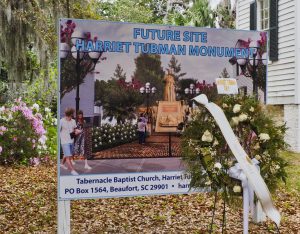
RECONSTRUCTION
Beaufort began the Port Royal Experiment which was a test case for the education of freedmen. Beaufort’s Civil War Hero, Robert Smalls, was South Carolina’s first elected African American to the U.S. Congress.
BEAUFORT TODAY
The Historic portion of downtown Beaufort is filled with galleries, boutiques, bed & breakfasts, museums, historic churches, independent bookstores, a waterfront park and picture-perfect homes.
Be certain to visit the quiet lanes of the neighborhood called, “The Point.” This area dates from the Revolutionary War and is one of the wealthiest and most beautiful neighborhoods in all of the Low Country. The architecture of the elegant antebellum mansions and peeks into magazine-worthy gardens should not be missed!
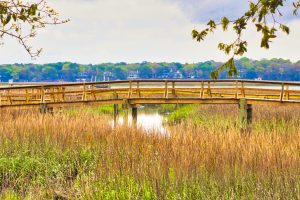
You can walk, take a carriage or van tour to see The Point. While walking the neighborhood, a kind resident walking his dog, stopped and talked to me about the history of the neighborhood dating back to 1711! You’ll see the author, Pat Conroy’s house, and the homes used in the movies, The Big Chill and The Great Santini. Look for the Means House on King Street that faces the Green, the Hamilton and Fripp Houses on Short Street and the SAMs House on Lauren’s Street.
There are Movie Tours available in Beaufort and for good reason! Take a look at just a portion of the movies that used Beaufort locations:
| Forrest Gump | The Big Chill |
| The Great Santini | The Prince of Tides |
| G.I. Jane | Rules of Engagement |
| Legend of Bagger Vance | Something To Talk About |
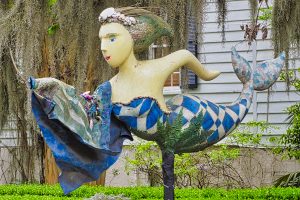
Beaufort has a thriving arts community and residents can be found at the symphony, street music festivals, area galleries, and the theater.
|
|
|
|
|
|
|
|
|
|
|
|
In addition to movies being made here, movie stars have stayed at a number of the bed & breakfast inns. As only one example, The Rhett House has been a temporary home to Barbra Streisand, Sandra Bullock, Tom Hanks, Gwyneth Paltrow, Kevin Bacon & Kyra Sedgewick, Robin Givens, Ben Affleck, Gabriel Byrne and Robert Redford!
|
|
|
|
|
|
Go to Beaufort, SC for an experience you will not forget. Enjoy the slow pace, southern hospitality, history and luxurious beauty of this low country treasure.
*Wikipedia
**ibid
*****www.stardem.com
******ibid
